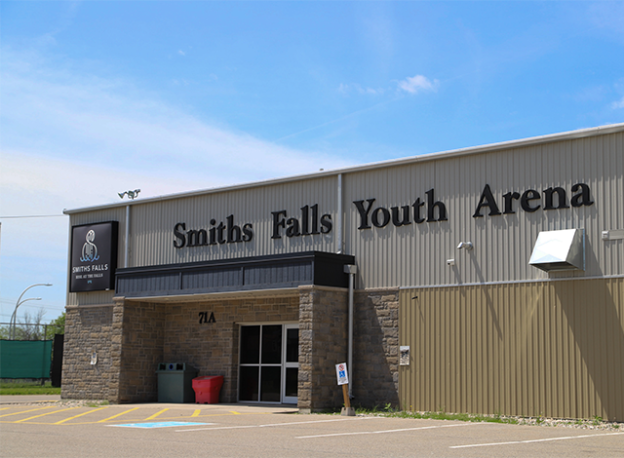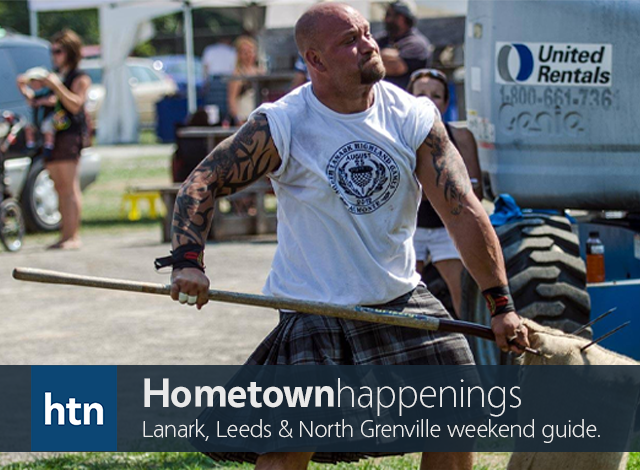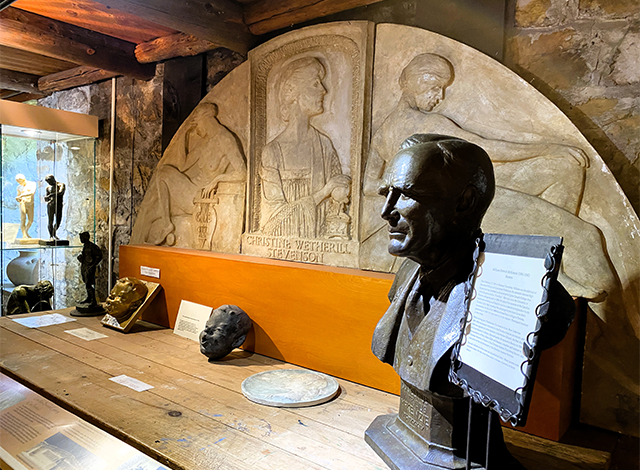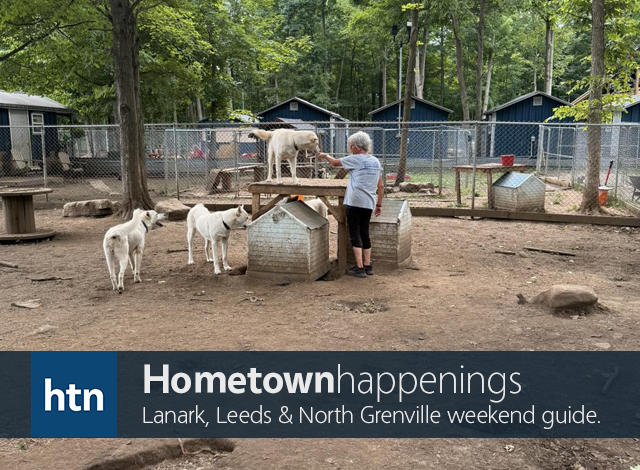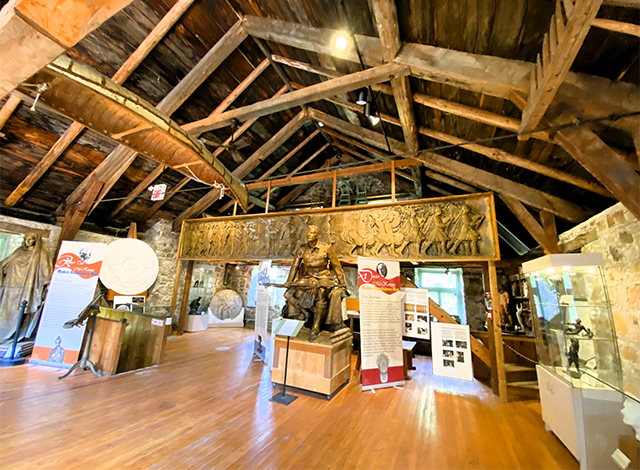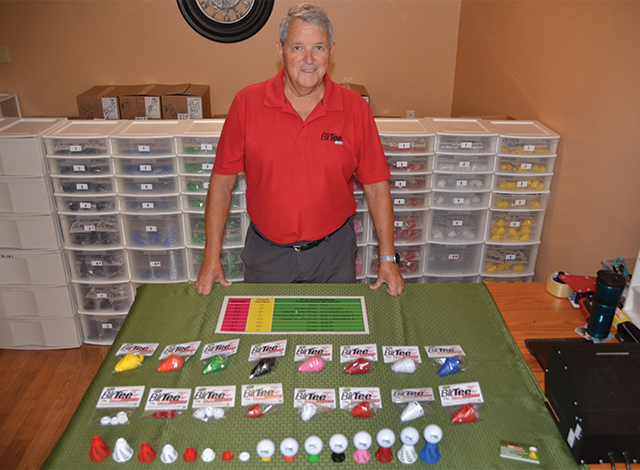Arena cost-sharing, climate lens, and community engagement flagged as next steps
LAURIE WEIR
SMITHS FALLS — Smiths Falls council has thrown its support behind a major recreation investment, voting to endorse a new arena and fieldhouse concept in principle, while directing staff to refine costing and engage regional partners.
Presented during the regular meeting of council on Aug. 25 by Director of Community Services Stephanie Clark, the proposed $39 to $49.5 million project calls for construction of a modern ice facility paired with a multi-court, climate-controlled fieldhouse. The dual facility would replace the aging Youth Arena and position Smiths Falls as a regional recreation hub for future generations.
“It is my personal and professional opinion that Smiths Falls deserves a modern year-round recreation facility,” said Clark.
Clark added that school gyms, while valuable, “cannot substitute for a municipal facility that reliably serves residents during the day, supports tournaments, and meets accessibility and inclusion goals.”
Coun. Steve Robinson said he doesn’t believe the use of school gyms can ever take the place of a “proper recreational hub,” because access to them isn’t always available.
“This project won’t move forward unless we’re successful with grants, and unless the surrounding townships are willing to partner with us,” Robinson said. “The town simply cannot take this on by itself.”
Robinson said he’d like to see a “fair cost sharing plan” come forward ahead of the cost-sharing agreement that is slated for renewal with the five neighbouring municipalities in 2026. That window of negotiating the current multi-year recreation agreement is now open.
Clark noted that the fieldhouse in this feasibility study would be the “linchpin” of the plan allowing for indoor recreation in a climate-controlled facility year round and be a key revenue generator.
Coun. Chris McGuire expressed reservations about the ongoing operating costs.
“I’m not just worried about sticker shock on the capital costs, but the ongoing investment of this. I want to make sure there is a business case and we can afford it. I don’t want to put such a debt load on future councils that other priorities such as the roads and everything else aren’t going to get done,” he said.
McGuire was also concerned about partnerships with other municipalities.
“There’s a big risk there,” he said. “I agree that this should be a regional facility but I also acknowledge that it’s getting harder to collaborate in a political context with different communities these days.”
Clark clarified that annual deficit includes both the Youth Arena and the Memorial Centre.
“If we move down to one ice pad we will lose a lot of opportunity for ice sales,” Clark said. “We are already jam packed as it is.”
Mayor Shawn Pankow acknowledged the scale of the investment, potentially the largest in the town’s history, but said it was necessary for long-term health, inclusion, and economic benefits.
“This is a regional facility already. More than half the current users come from outside town borders,” he said. “We simply can’t do it alone. We need our neighbouring municipalities and upper-tier support.”
Pankow referenced discussions at the recent AMO conference, where he said provincial representatives showed interest but made clear that any funding application would require shovel-readiness.
“We were turned down for a $10 million grant because we weren’t shovel ready. But we’re now on the radar,” he said.
CAO Malcolm Morris suggested forming a broad-based steering committee to shepherd the project forward, including municipal neighbours, user groups and potential community champions.
“This needs a coalition of partners. A champion or two to lead the fundraising. That kind of focused group can do a lot of the heavy lifting,” Morris said.
Coun. Peter McKenna supported the move but emphasized the need for user groups to step up.
“We need a coalition of key partners, and unless those user groups get fired up and get behind this, I don’t believe it will go ahead. This is one of the hardest … how we do it is more important than anything, otherwise it won’t succeed.”
McKenna also said they need to be aware of the climate impact with a new build.
Clark and Morris both stressed the importance of building through a climate lens, as many infrastructure funding streams now prioritize energy efficiency, carbon reduction and environmental leadership.
“It’s the right thing to do,” Clark said. “And it improves our chances of getting funded.”
Coun. Dawn Quinn, who chaired the meeting, and was on council when the Memorial Centre was built, said they received a lot of feedback then, especially about the walking track.
“They said nobody would use the walking track last time. They were wrong,” she said. “We’re proud of what we have, and this next step needs to be even better.”
Council directed staff to:
- Refine costing using design-build and guaranteed maximum price strategies
- Develop a regional cost-sharing framework
- Begin preparations for grant applications, sponsorships and community fundraising
- Report back with recommendations on forming a steering committee
Staff confirmed that construction is not imminent. A multi-year timeline is expected, with design, funding and partnership development required before shovel-ready status is achieved.
As Pankow concluded: “If we build it, they will come. But first, we need a solid plan and strong partners.”
The Youth Arena, which has served the community for decades, is at the end of its lifecycle. The feasibility study confirmed that partial retrofits or smaller-scale builds would not meet modern accessibility, inclusion or tournament standards. Option 1B was deemed the most viable choice to reduce deficits, increase usage, and serve diverse recreational needs, particularly for seniors, youth, and low-income families.

